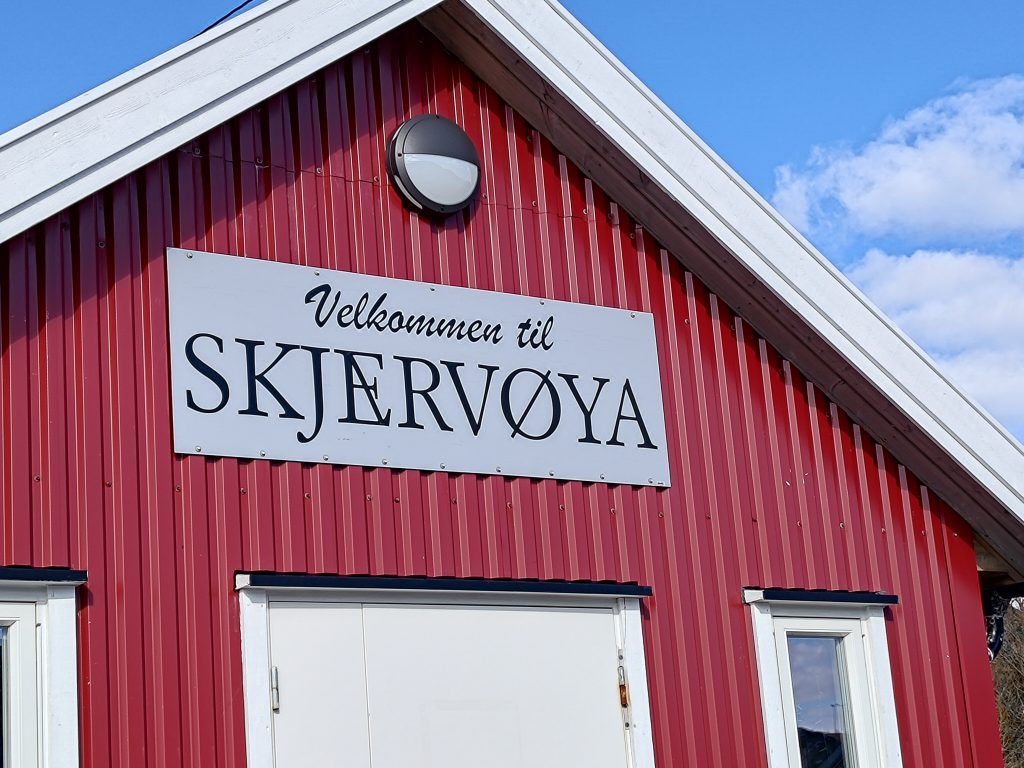
It’s been Easter week in Norway and there are many days where everything is closed down, including Thursday, Friday, Sunday (Easter Day) and Monday. Many people take most of the week off and I’ve been enjoying having my son at home for the week. We were invited to visit a family that have a holiday cabin on this remote island. Wednesday was the only day we would be able to make a day trip there, that is, get out to the island and back to the mainland on the same day. The weather forecast was good for the end of March so we made arrangements to go visit our friends.
We started from home about 10 am and we had a two-hour drive to where we would get the ferry out to the island. We had an extra half an hour so we could take breaks along the way. The first break, after about 50 minutes, was to change drivers, stretch our legs and drink a cup of coffee. The second break was more interesting and we grabbed a little something to eat as well as taking some photos of the waterfall, Nordmelandfossen, on the Luna River.
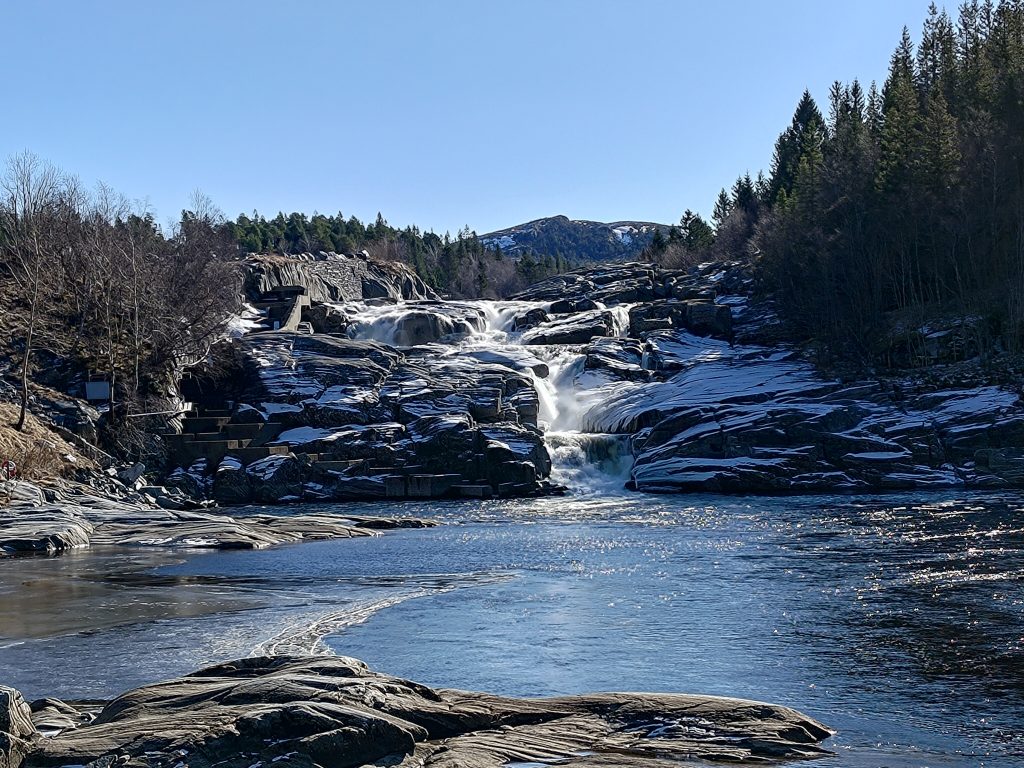
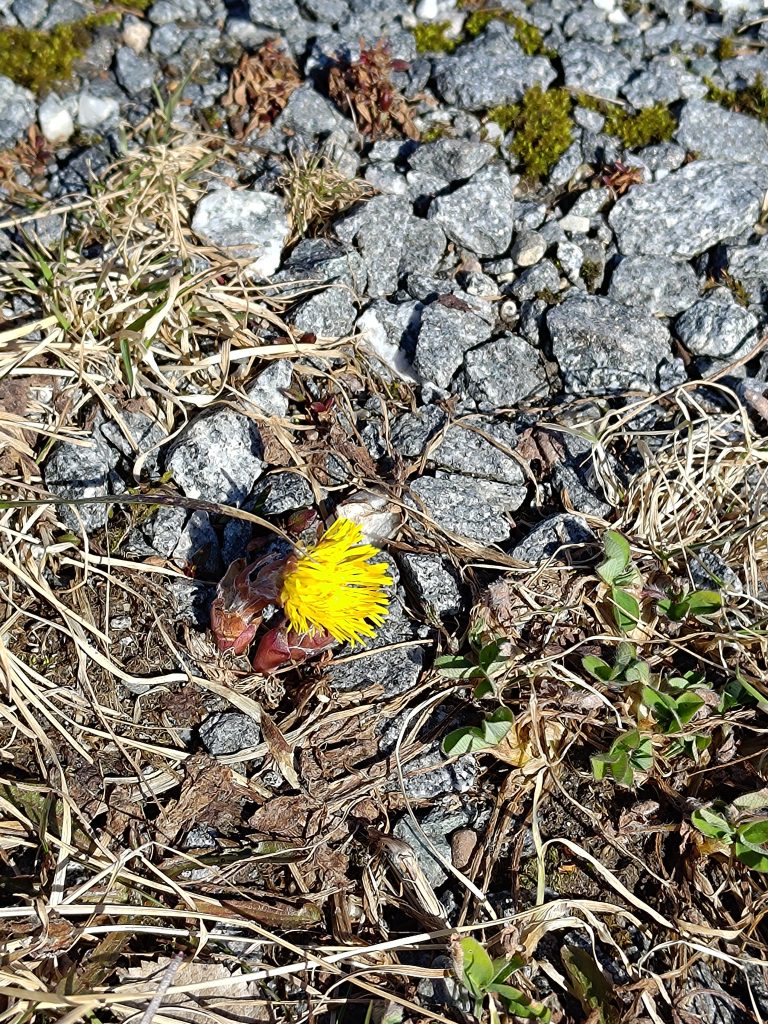
It wasn’t that warm, even though the sun was shining. There is still snow on the rocks that are mostly in the shade. There were still frozen sections on the river, and small chunks of ice floating downhill. We didn’t stop long as we still had a few kilometers to drive before parking the car for the day and taking a passenger ferry out to the island of Skjærvøya.
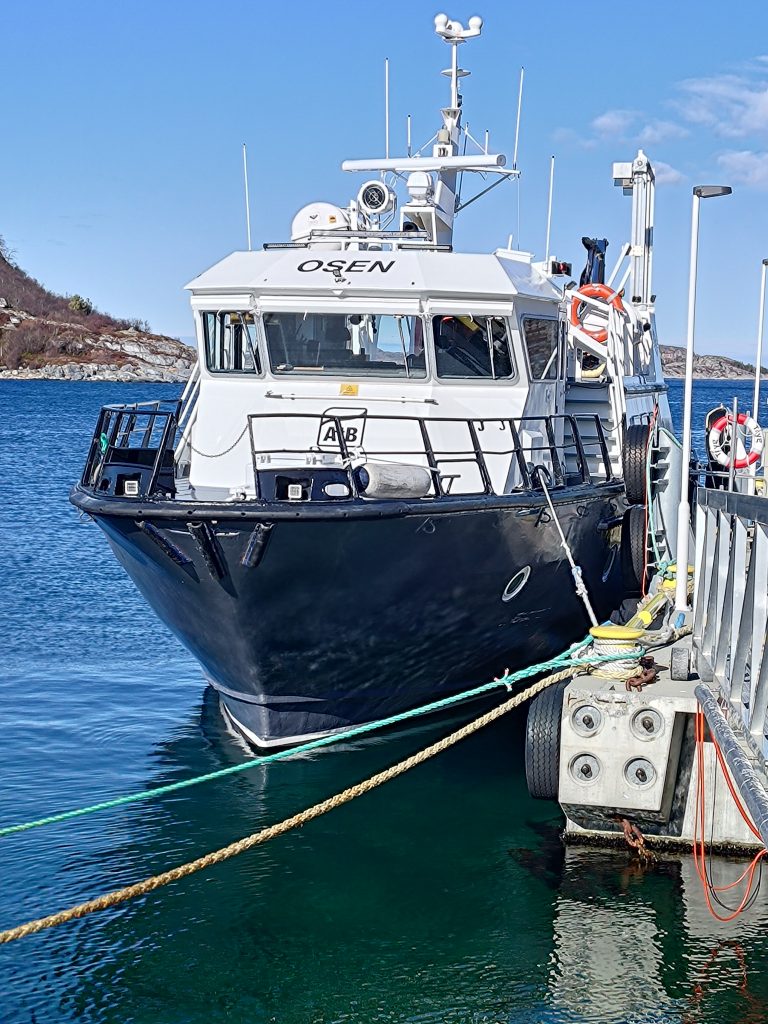
I love taking ferries and it has been quite a while since I have taken one. This is a small passenger-only ferry which can hold up to 48 passengers, though there were not that many on it when we took it. It was warm enough to stand outside the whole time as long as one was in the lee of the boat itself. The trip out to the island takes about 20 minutes, depending on whether there are other stops on the way.
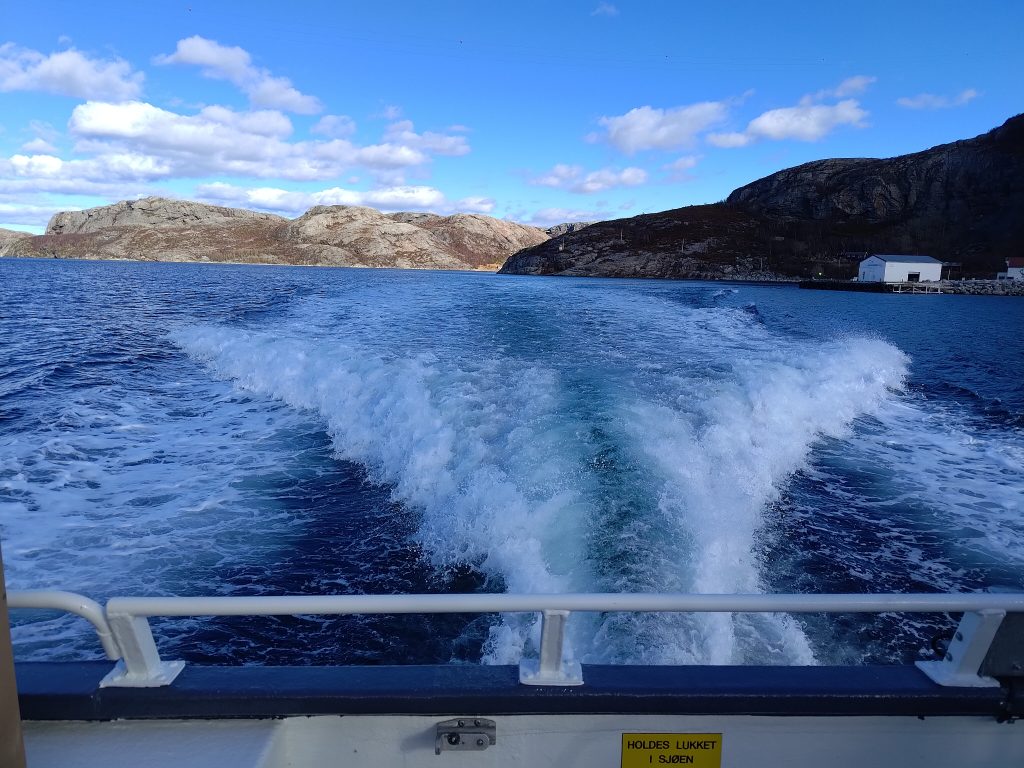

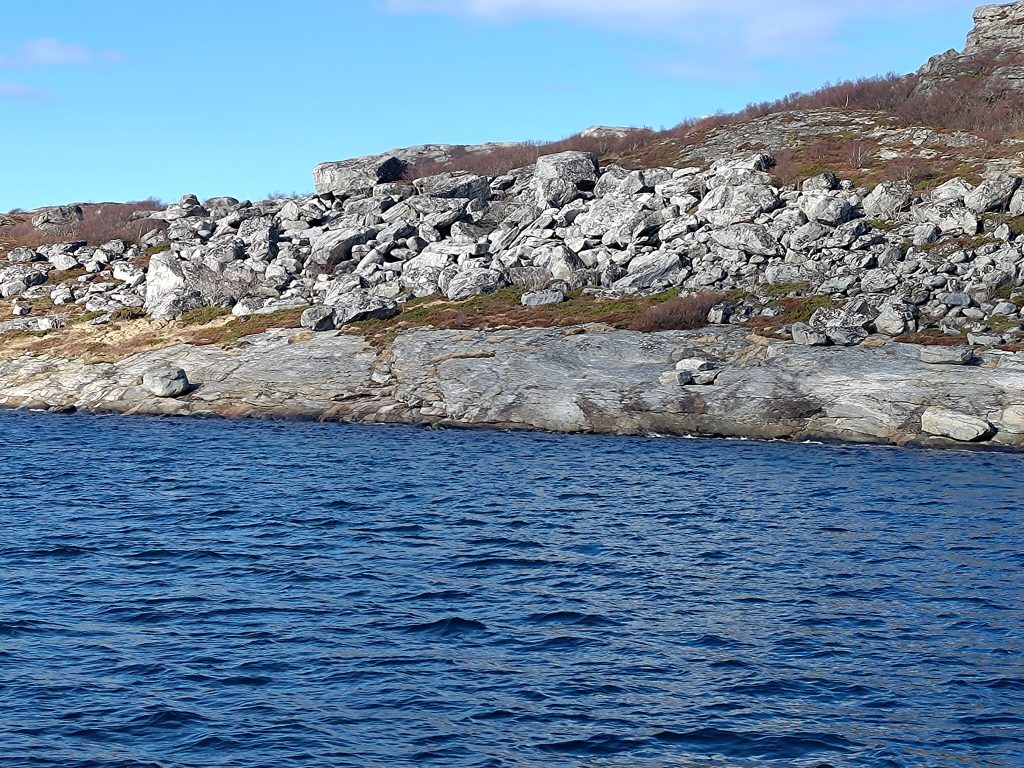
These islands are very rocky and this little bit was extra rocky. I wondered if the waves had moved some of the large rocks during storms. This is the end of March, so there are no leaves on deciduous trees and most things have not started to grow at all. So what will be green later in the summer, is still a winter brown.
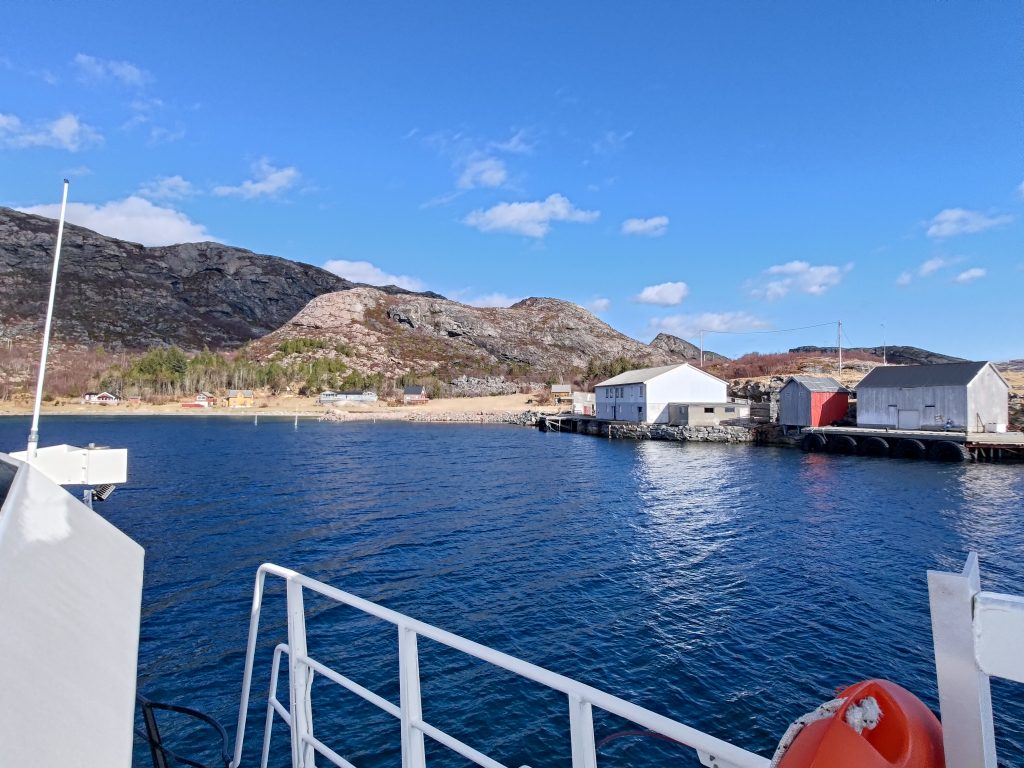
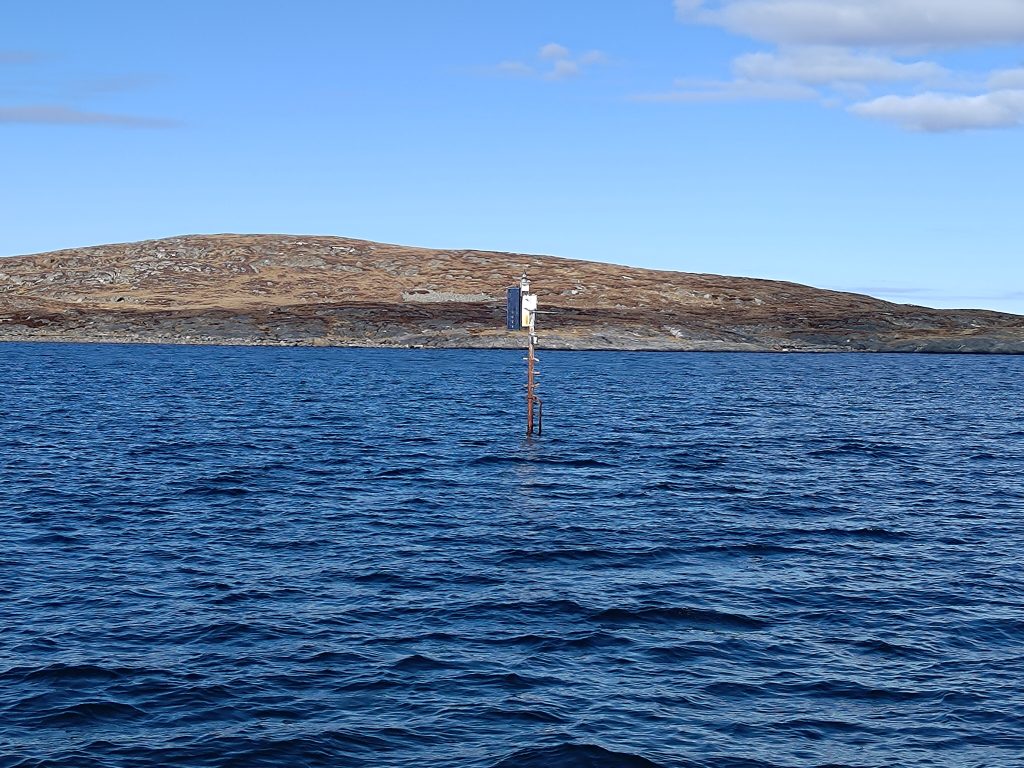
Skjærvøya is really two islands joined by a concrete wall that one can walk or drive over. The only vehicles are small electric cars, motorcycles, tractors or all-terrain vehicles. There seem to be several small farms on each island and I did see some sheep out grazing. All the housing is primarily on the south and south-east sides of the islands, protected from the worst of the storm winds. There are still a few people that live her year-round, but there is no longer a school or a store here.
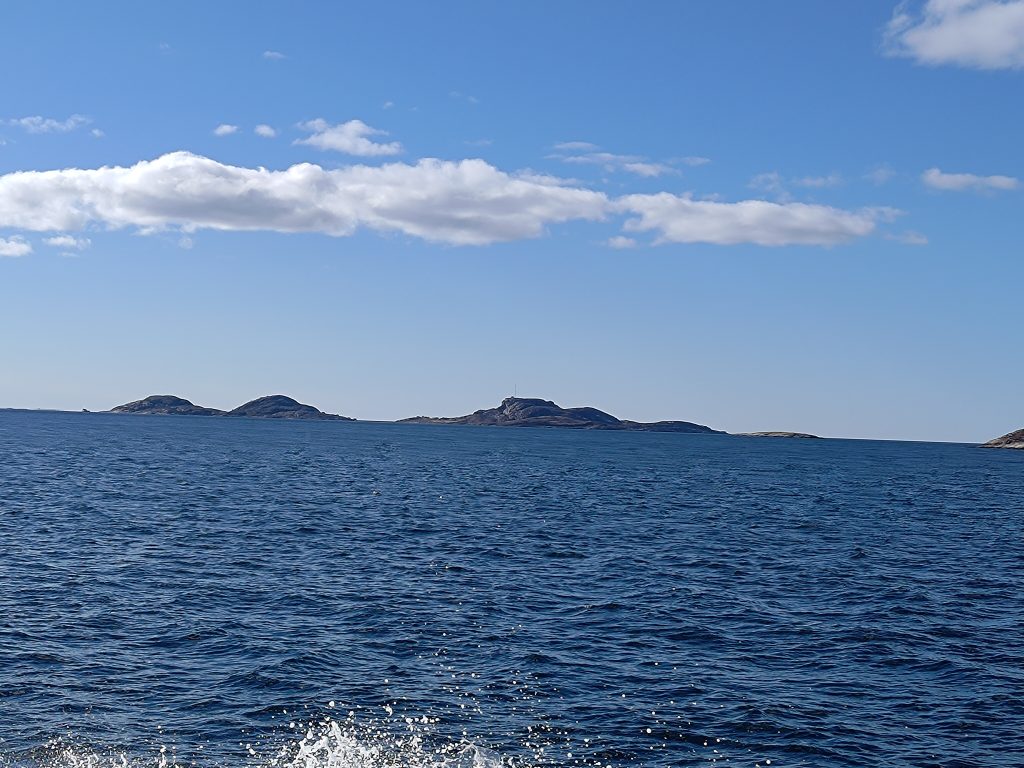
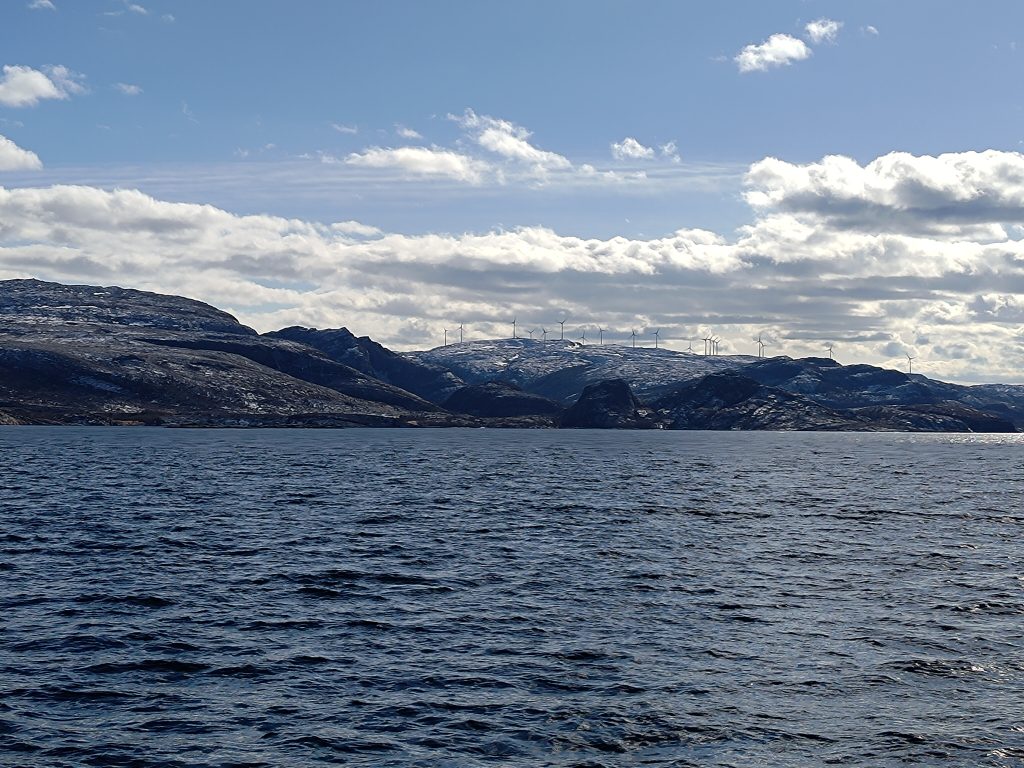
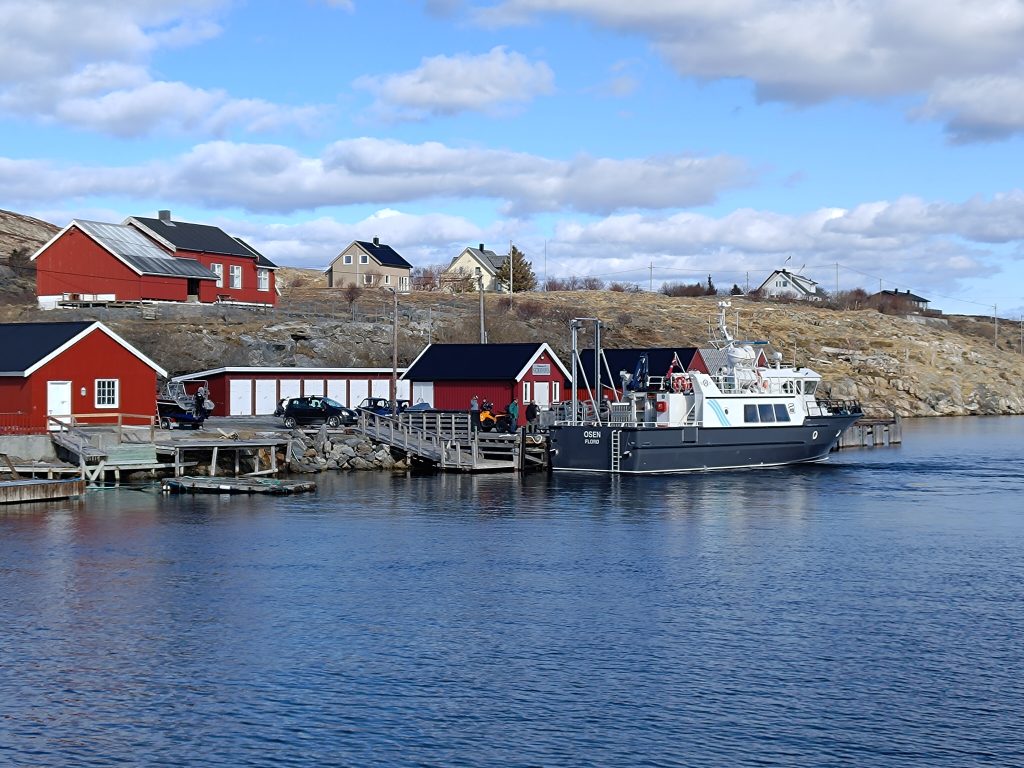
We were met at the ferry by our friends and we had a 25 minute walk to their cabin. The above picture is taken from the concrete wall that connects the two islands. Our destination is a cabin on the inner island. Most of our walk was on the sheltered side of the island and was quite pleasant. Though there was a little uphill section, most of the walk was reasonably flat and on a road.
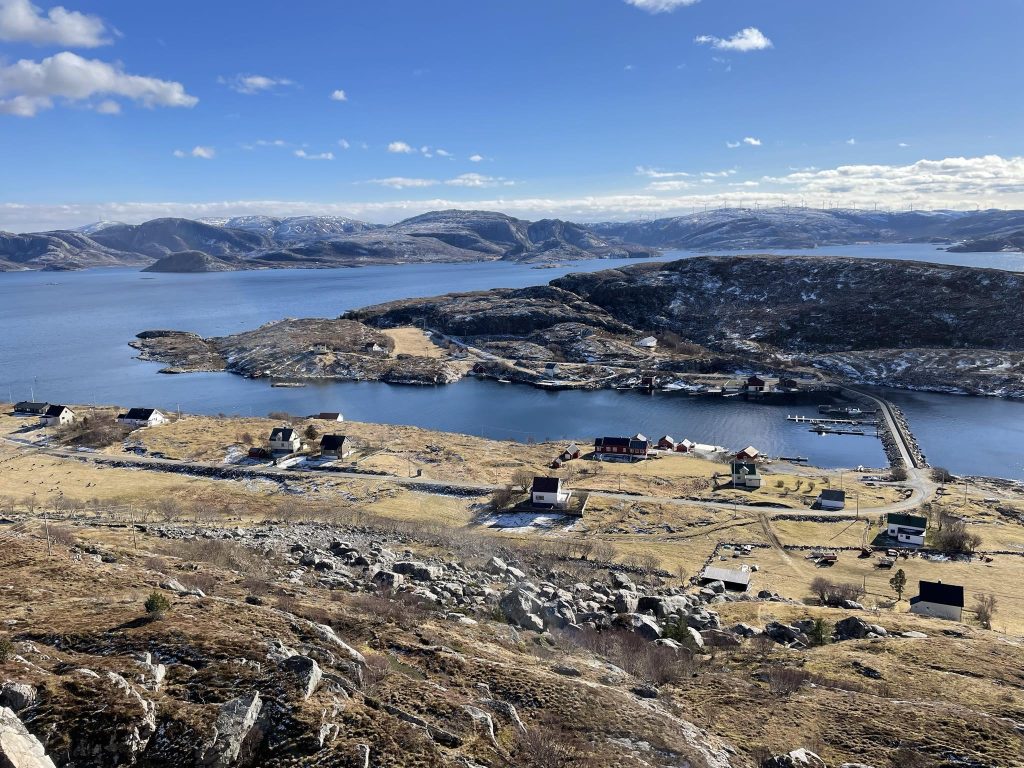
These islands are quite isolated, especially in bad weather, so the numbers of people living there full-time has decreased over the decades. However, from Easter week and through the summer, Norwegians enjoying coming to out-of-the-way places to get away from the cities and towns. Note the houses in the pictures, which look like they were built in the 1950s. In the past, when fishermen rowed out to the fishing areas, one wanted to be as close as possible and therefore many families lived on these rather remote islands. Today fish farming has become very common in the Norwegian fjords and employ quite a few people.

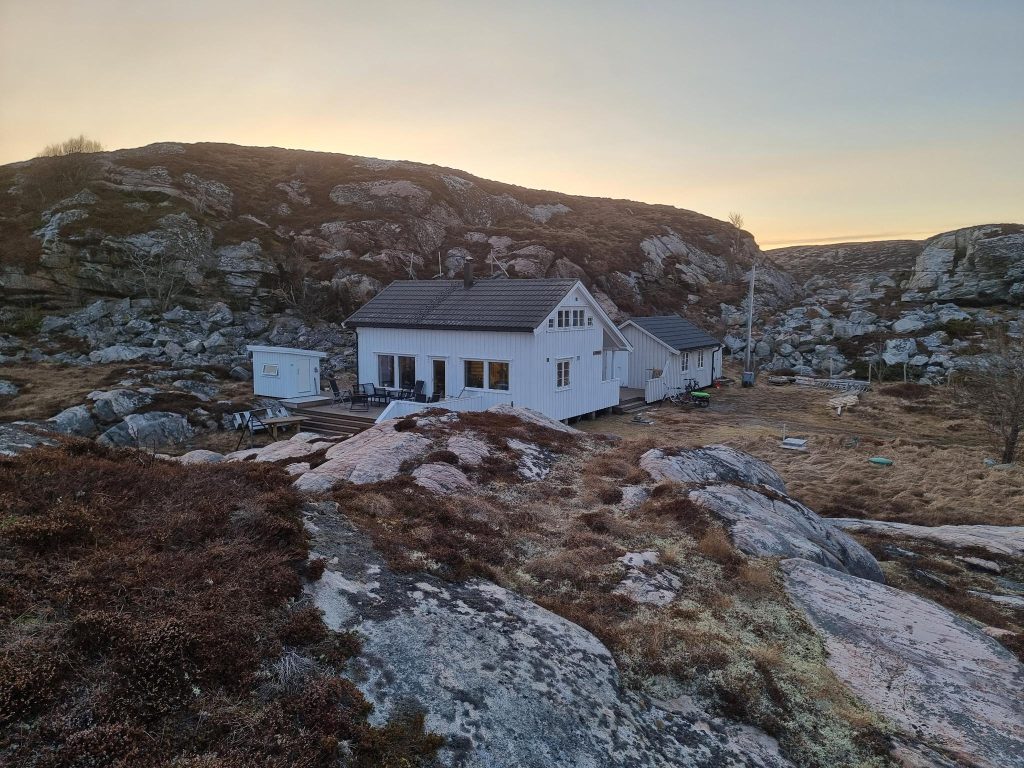
When one looks at the houses that were built 50 to 100 years ago, they were always nestled so that they were sheltered from the worst of the wind. Having a view over the water was less important than staying protected. This cabin was built about 15 years ago. It was sunny and about +10 degrees centigrade, so we kept our coats on and sat outside for at least an hour or more before going inside to eat. The small building on the left was used by a nine-year old as a place to make things and hide away from the adults. At the back of the house is an annex with more sleeping places. Upstairs is basically a lot of sleeping places, often as bunk beds. They could probably sleep 15 people there without problems.
The cabin has modern conveniences, including electricity, running water, a hot water tank, shower, and small laundry machine. Life is kept simple and the idea is to relax and enjoy just being with the people who are there with you.
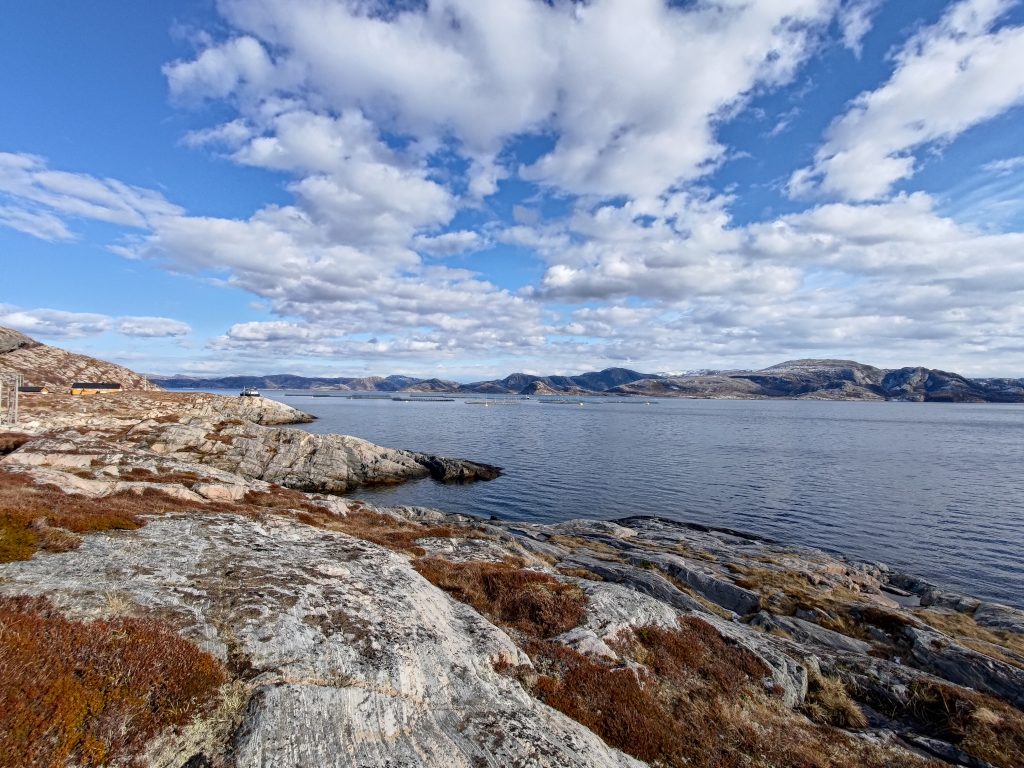
I have always liked walking around on rocky coastline like this, though on this trip I noticed that I’m not as young as I used to be. The rocks were dry and easy to move around on, but my balance isn’t as good as it used to be and I had to be much more careful than I would have been 10 years ago. Where I live now, there isn’t this sort of rock to walk on much, so I’m out of practice.
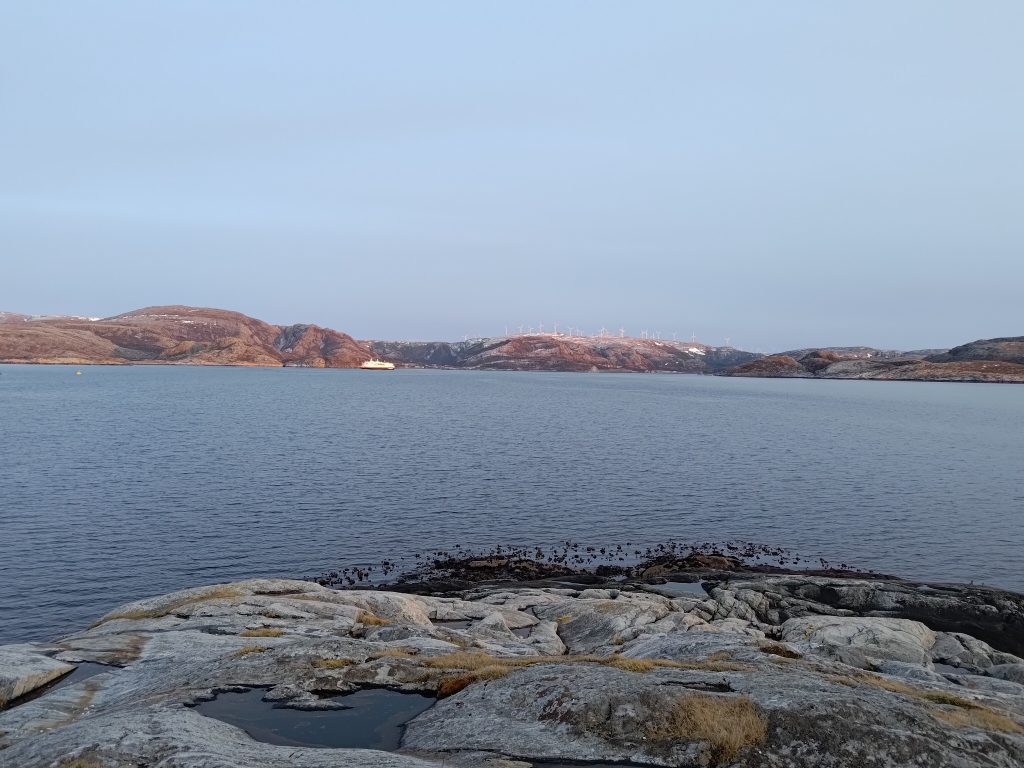
As the sun was setting, suddenly the Coastal Express Ship from Hurtigruten came into sight in the distance. Richard With was sailing north through an inside channel, giving its passengers an interesting view of the coast of Trøndelag. It was actually quite far away, but the sun was shining on the ship, so it showed up quite well. Usually I have been on the mainland to see the ship pass by on its northward journey. Those traveling south travel at night and do not take the inside route, but would head straight to Trondheim.
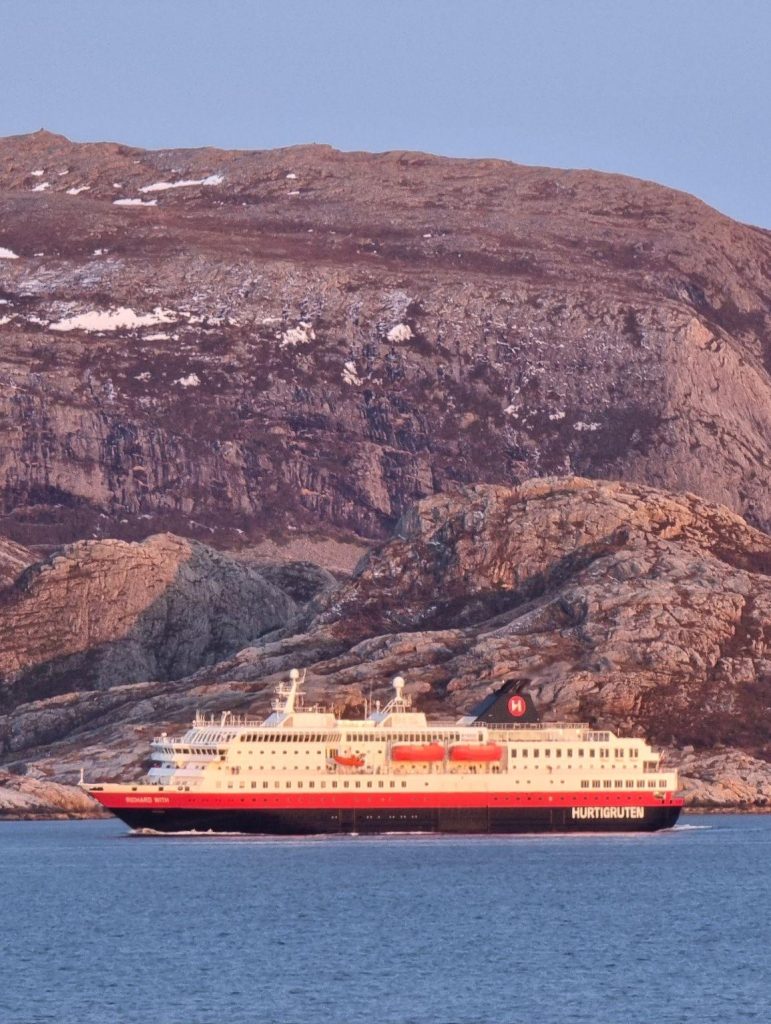
I enjoyed my visit to the island of Inner Skjærvøya. Being on the island was relaxing. We enjoy being with the people we visited. We got a bit of a walk each way to the ferry and we were fed a very nice meal while we were there. The ferry ride back to the mainland was in the dark, so not nearly as interesting as the outward trip. I did not enjoy the two hour drive each way to the ferry, so it will probably not be a trip that we take very often. As I get older, I do not enjoy driving on windy, bumpy roads any more. The experience of being on a different island was very rewarding.

Very refreshing blog Trish! Would love to experience the same. Our best vacations are exploring the outdoors. We are continuing to visit all the Vancouver islands and close by Washington islands. Road trips with our recent family member, Bao Lin (Shih Zhu, Havanese mix) is so much fun as we love the outdoors as much as she does.
If only we could fly with her to Norway!
I really enjoyed seeing the pictures of a part of Norway I have never seen before. The commentary was good too.